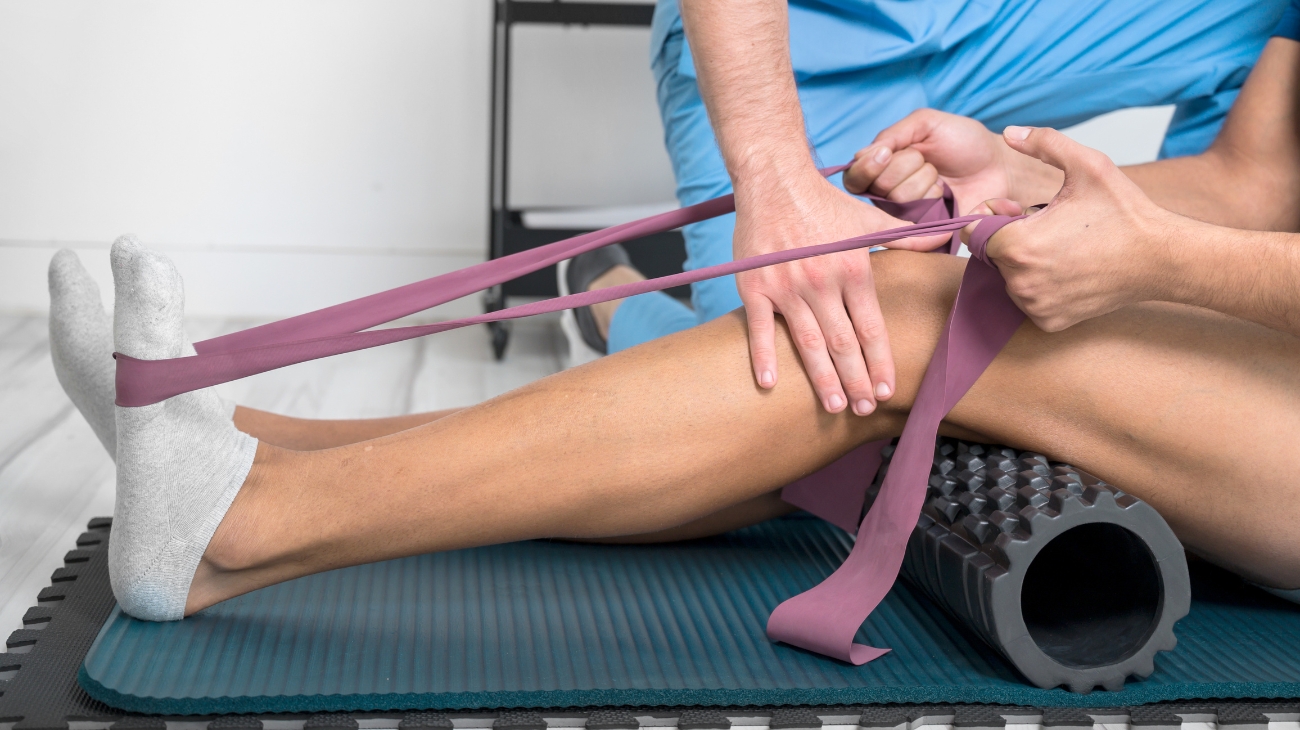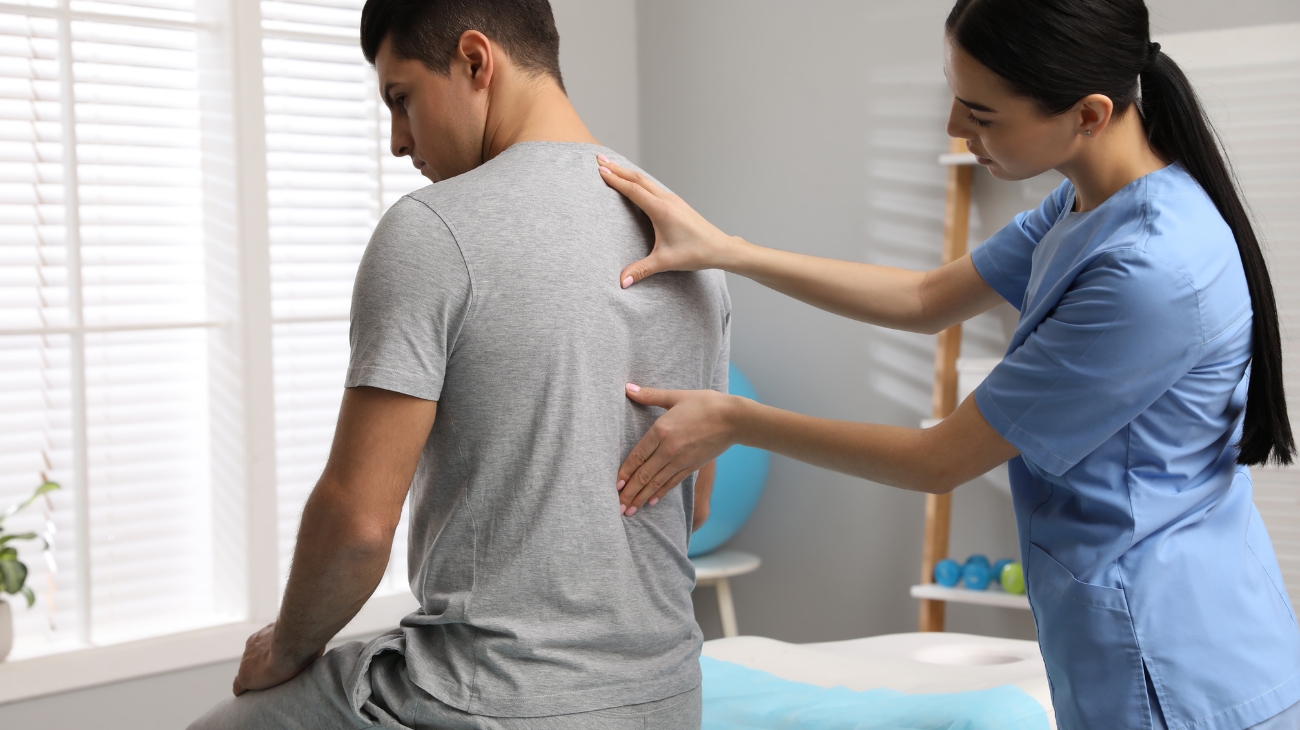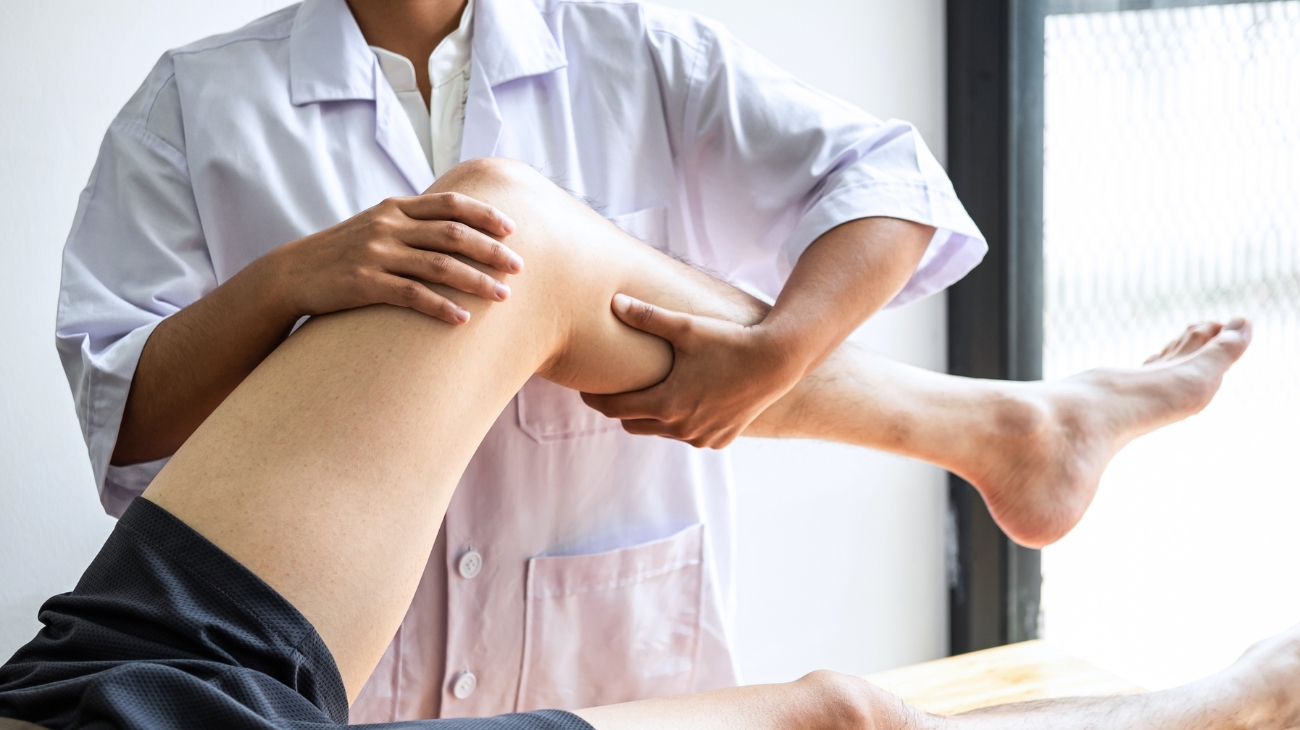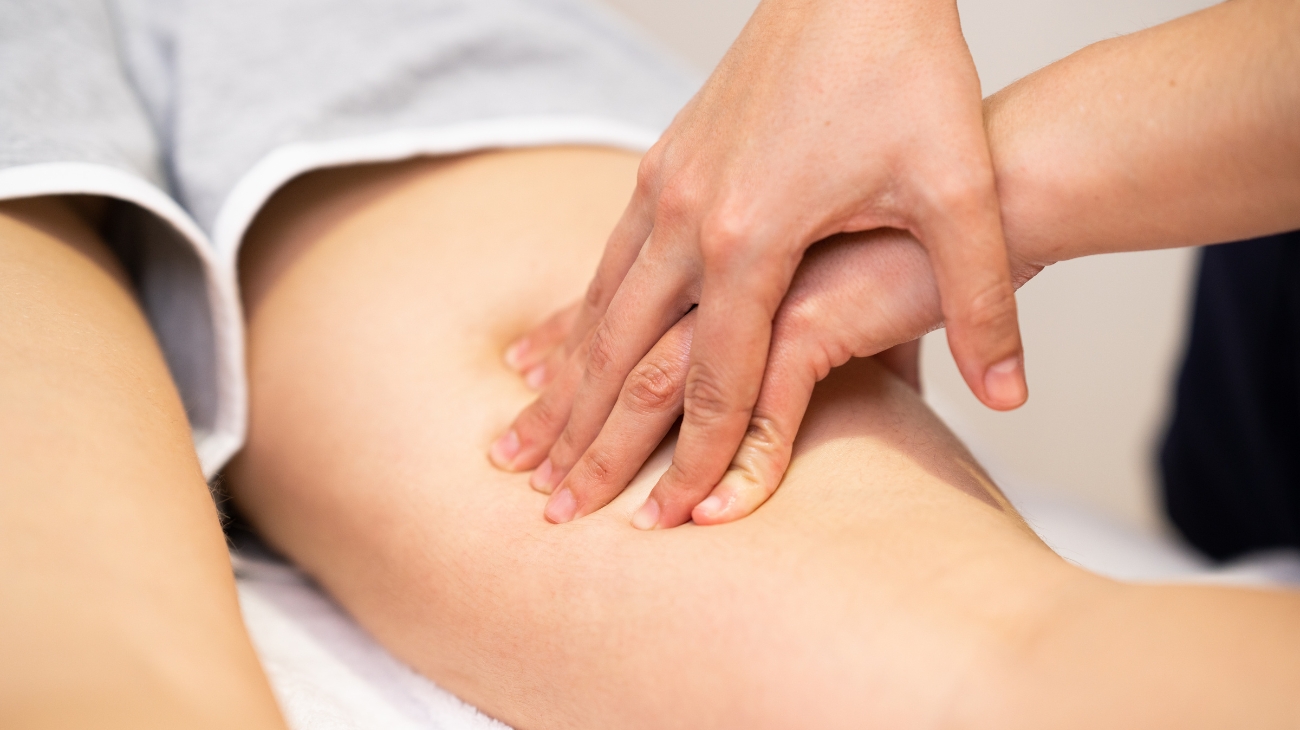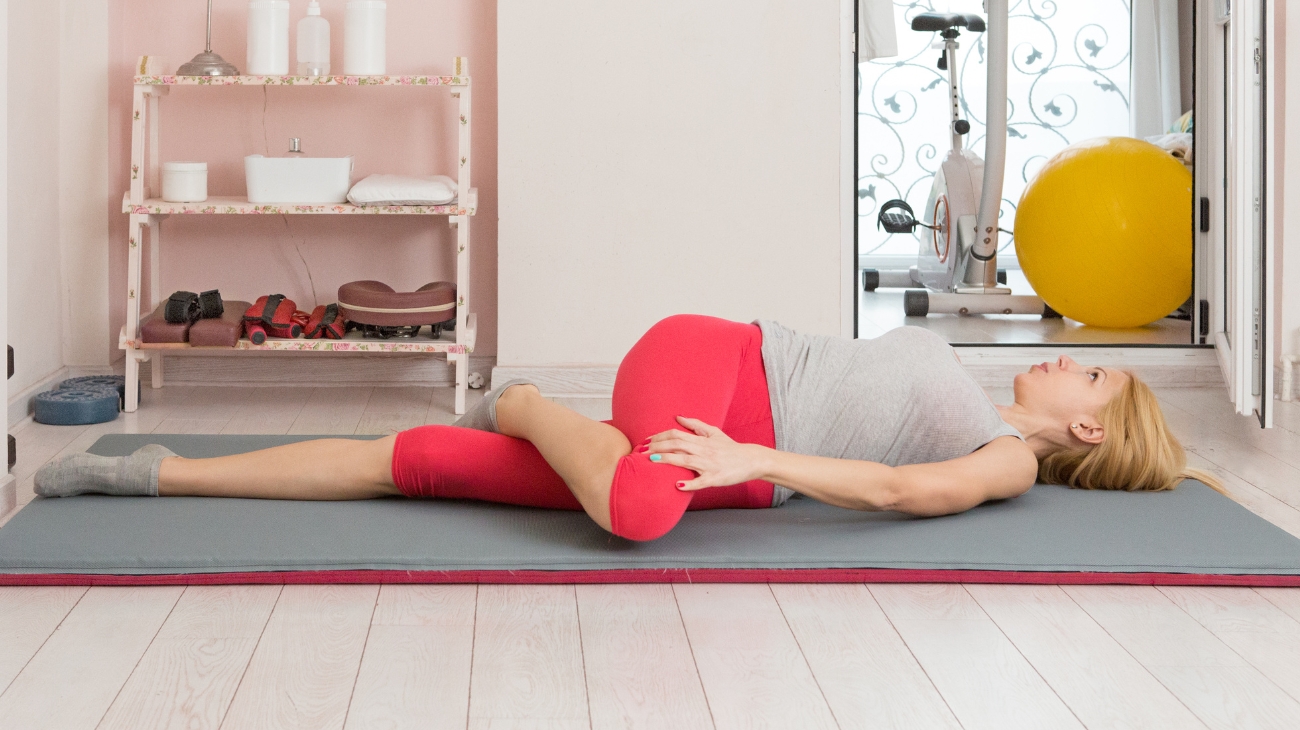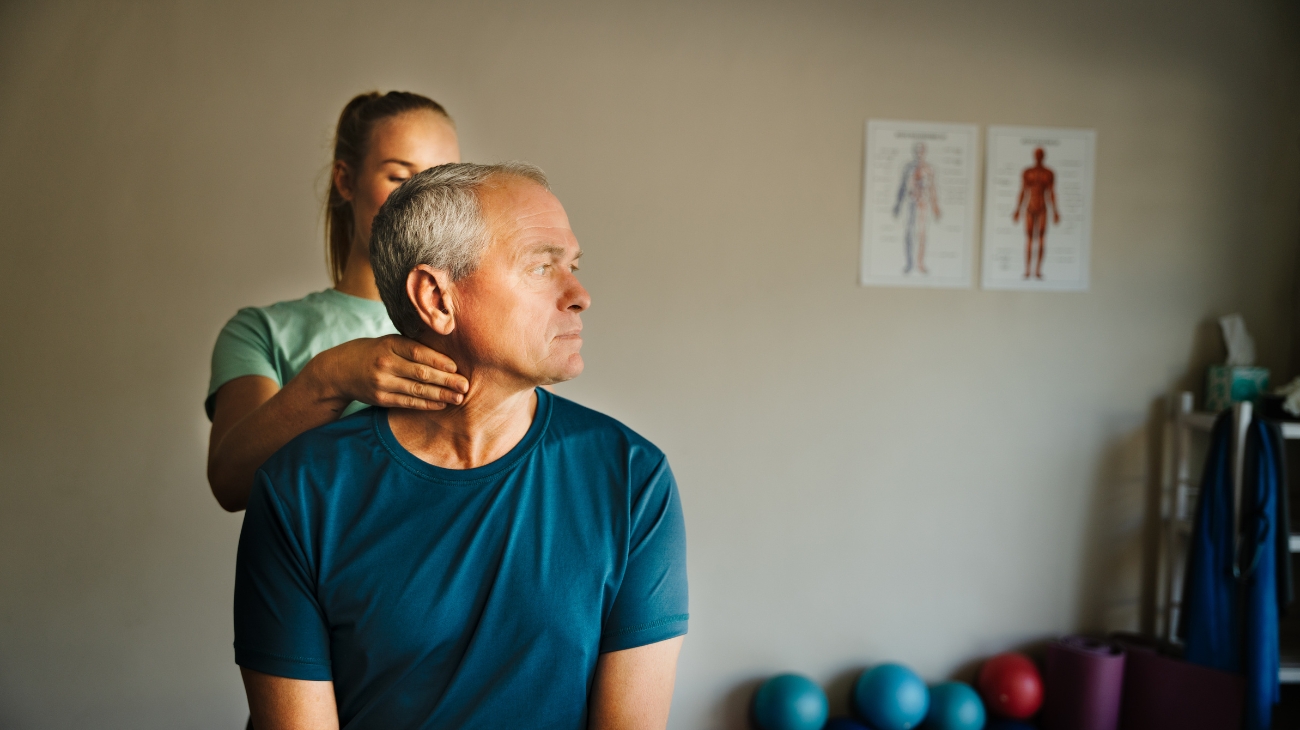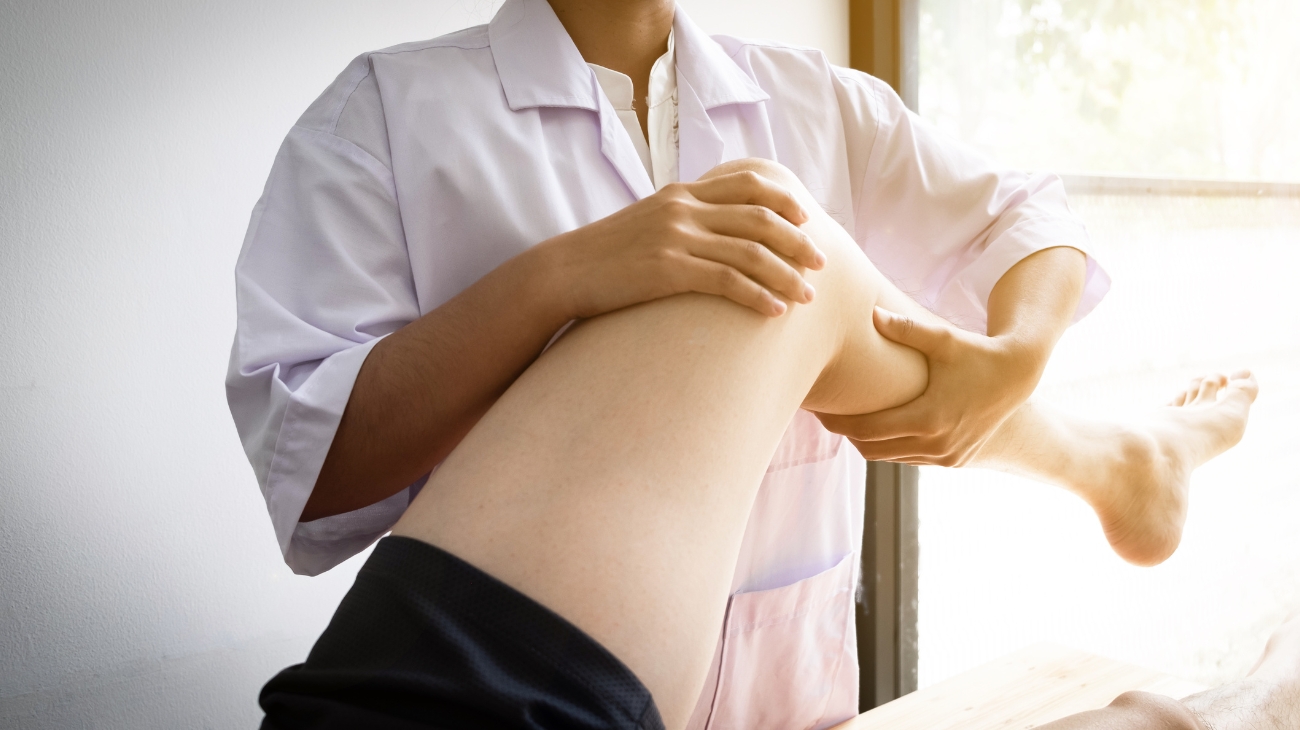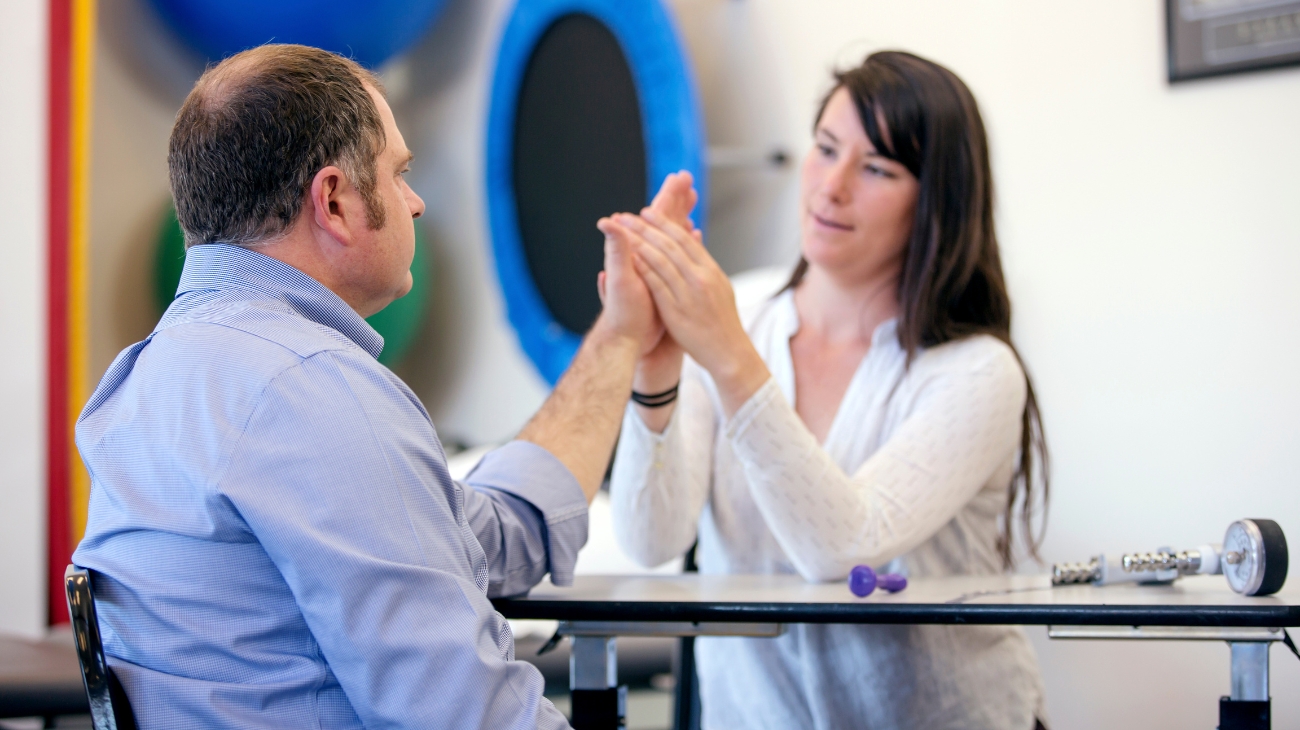Is important to know the best exercises for rotator cuff rehabilitation and pain relief because the rotator cuff plays a crucial role in stabilizing and moving the shoulder joint. The rotator cuff consists of four muscles and their tendons that work together to provide strength and stability to the shoulder. When these muscles or tendons are injured, it can cause pain, weakness, and limited range of motion in the shoulder.
Rehabilitation exercises can help strengthen the rotator cuff muscles and improve overall shoulder function. Knowing the best exercises for rotator cuff rehabilitation can help ensure that patients are receiving the most effective treatment for their specific injury. Pain relief exercises can also help alleviate discomfort and promote healing in the affected area.
Best rotator cuff rehab and mobility exercises
By providing patients with the right exercises and techniques, Manual Physical Therapists can help improve their quality of life and reduce the risk of future injuries. In summary, knowing the best exercises for rotator cuff rehabilitation and pain relief is crucial for effective treatment and promoting healing in patients with shoulder injuries.
1 - External rotation at 0 degrees abduction (Bands)
To perform the External Rotation at 0 degrees abduction exercise with resistance bands, follow these steps:
- Attach a resistance band to a sturdy anchor at waist height.
- Stand with your side to the anchor, keeping your elbow at a 90-degree angle and the forearm parallel to the ground. Your arm should be at shoulder height.
- Grasp the band's handle and step away from the anchor point to create tension.
- Initiate the movement by rotating your forearm outward against the resistance of the band.
- Slowly return to the starting position, maintaining control.
- Perform 2-3 sets of 12-15 repetitions for each arm.
Muscles involved:
- Rotator Cuff Muscles (Supraspinatus, Infraspinatus, Teres Minor): These muscles are responsible for external rotation of the shoulder and provide stability.
- Deltoids: The lateral part of the deltoids assists in this movement.
2 - External rotation at 90 degrees abduction (Bands)
To perform the External Rotation at 90 degrees abduction exercise with resistance bands:
- Attach a resistance band to a sturdy anchor at shoulder height.
- Stand with your side to the anchor, keeping your elbow bent at a 90-degree angle, and your forearm parallel to the ground. Your arm should be abducted (out to the side) at shoulder height.
- Hold the band's handle and step away from the anchor to create tension in the band.
- Begin the movement by rotating your forearm outward against the resistance, maintaining your elbow at the 90-degree angle.
- Slowly return to the starting position while controlling the band's tension.
- Perform 2-3 sets of 12-15 repetitions for each arm.
Muscles involved:
- Rotator Cuff Muscles (Supraspinatus, Infraspinatus, Teres Minor): These muscles are primarily responsible for external rotation of the shoulder and provide stability.
- Deltoids: The lateral part of the deltoid muscles is engaged during this exercise.
3 - Internal rotation at 0 degrees abduction (Bands)
To perform the Internal Rotation at 0 degrees abduction exercise with resistance bands:
- Attach a resistance band to a sturdy anchor at elbow height.
- Stand facing the anchor, with your elbow bent at a 90-degree angle and your forearm parallel to the ground. Your arm should be at your side (0 degrees abduction).
- Hold the band's handle and step away from the anchor to create tension in the band.
- Start the movement by rotating your forearm inward against the resistance while keeping your elbow at a 90-degree angle.
- Gently return to the starting position while maintaining control of the band's tension.
- Perform 2-3 sets of 12-15 repetitions for each arm.
Muscles involved:
- Subscapularis: This muscle is primarily responsible for internal rotation of the shoulder.
- Pectoralis Major: The sternal head of the pectoralis major is also involved in this movement.
4 - Internal rotation at 90 degrees abduction (Bands)
To perform the Internal Rotation at 90 degrees abduction exercise with resistance bands:
- Attach a resistance band to a sturdy anchor at shoulder height.
- Stand with your side facing the anchor, your elbow bent at a 90-degree angle, and your arm abducted to 90 degrees (elbow and upper arm perpendicular to your body).
- Hold the band's handle and step away from the anchor to create tension in the band.
- Initiate the movement by rotating your forearm inward against the resistance, maintaining the 90-degree abduction of your arm.
- Slowly return to the starting position, controlling the band's tension.
- Perform 2-3 sets of 12-15 repetitions for each arm.
Muscles involved:
- Subscapularis: Primarily responsible for internal rotation at the shoulder.
- Pectoralis Major: The sternal head of the pectoralis major also contributes to this movement.
5 - Shoulder Full can
The Shoulder Full Can exercise is a crucial movement for strengthening the muscles around the shoulder joint, particularly the rotator cuff:
- Stand with your feet shoulder-width apart.
- Hold a light dumbbell (1-5 pounds) in each hand.
- Keep your arms by your sides, elbows flexed to 90 degrees, and palms facing forward.
- Slowly raise your arms forward and upward, in line with your body, forming a "full can" shape.
- Pause briefly at the top of the movement.
- Lower your arms back to the starting position.
- Perform 2-3 sets of 12-15 repetitions.
Muscles involved:
- Supraspinatus: Initiates and assists in the first part of the abduction movement.
- Infraspinatus and Teres Minor: These muscles aid in external rotation and shoulder stability.
- Deltoid: The anterior part is involved in the initial phase of abduction.
6 - Shoulder Empty can (Dumbbell)
The Shoulder Empty Can exercise with a dumbbell is designed to strengthen the supraspinatus muscle while promoting shoulder stability:
- Stand or sit with proper posture, maintaining a straight back.
- Hold a light dumbbell (1-5 pounds) in one hand, or you can use both hands if preferred.
- Position your arm by your side with your elbow flexed to 90 degrees, and your thumb pointing downward, resembling an "empty can."
- Slowly raise the dumbbell forward and upward, keeping your arm in line with your body until it's parallel to the ground.
- Pause briefly at the top of the movement.
- Lower the dumbbell back to the starting position.
- Perform 2-3 sets of 12-15 repetitions for each arm.
Muscles involved:
- Supraspinatus: The primary muscle targeted for strengthening.
- Infraspinatus and Teres Minor: These muscles provide support and stability to the shoulder joint.
7 - Shoulder Scaption
The Shoulder Scaption exercise is a fundamental movement for shoulder strength and stability:
- Stand with your feet shoulder-width apart, maintaining good posture.
- Hold a dumbbell in each hand with your palms facing your body.
- Start with your arms by your sides and your elbows slightly bent.
- Lift both arms forward and upward at a 30-45 degree angle from your body. Imagine you're raising them in a "Y" shape.
- Continue the motion until your arms are parallel to the ground or at shoulder height.
- Pause briefly at the top of the movement.
- Lower the dumbbells back to the starting position.
- Perform 2-3 sets of 12-15 repetitions.
Muscles involved:
- Deltoids: The anterior (front) and middle deltoid heads are the primary muscles engaged.
- Supraspinatus: Supports the initial phase of the lift.
- Serratus Anterior: Stabilizes the shoulder blades during the movement.
8 - Prone horizontal abduction
The Prone Horizontal Abduction exercise is an effective way to target the posterior shoulder muscles and enhance shoulder stability:
- Lie facedown on an exercise bench, with your head off the bench and your chest at the edge.
- Hold a dumbbell in each hand with your arms extended straight toward the floor, palms facing each other.
- Keep your head aligned with your spine and engage your core muscles.
- Slowly lift your arms upward, moving them away from your body, keeping a slight bend in your elbows.
- Lift your arms until they are in line with your body, then lower them back down.
- Perform 2-3 sets of 10-15 repetitions.
Muscles involved:
- Posterior Deltoid: The primary muscle responsible for horizontal abduction.
- Infraspinatus and Teres Minor: Assist in external rotation and shoulder stability.
- Trapezius: Provides support and stability to the scapula.
- Rhomboids: Support scapular retraction.
9 - Shoulder Horizontal Abduction (Bands)
The Shoulder Horizontal Abduction with resistance bands is a great exercise for targeting the posterior shoulder muscles and improving shoulder stability:
- Begin by attaching a resistance band to a fixed point at waist level.
- Hold the band with both hands, palms facing downward, and stand with your side to the attachment point.
- Keep your elbow slightly bent and your shoulder blade pulled back and down.
- Pull the band horizontally away from your body, leading with your elbow, until your arm is at shoulder level.
- Slowly return to the starting position.
- Perform 2-3 sets of 10-15 repetitions on each side.
Muscles involved:
- Posterior Deltoid: The primary muscle responsible for horizontal abduction.
- Infraspinatus and Teres Minor: Assist in external rotation and shoulder stability.
- Trapezius: Provides support and stability to the scapula.
- Rhomboids: Support scapular retraction.
10 - Cross-body stretch
The Cross-Body Stretch is a simple yet effective exercise for stretching the posterior shoulder and improving flexibility:
- Stand or sit up straight with your back unsupported.
- Take your right arm and reach it horizontally across your chest.
- Use your left hand to gently push your right arm closer to your chest, feeling a stretch in the back of your right shoulder.
- Hold the stretch for 20-30 seconds while breathing deeply.
- Repeat the stretch with your left arm across your chest.
Muscles involved:
- Posterior Deltoid: This muscle is stretched as you bring your arm across your chest.
- Infraspinatus and Teres Minor: These muscles in the rotator cuff also experience a gentle stretch.
- Rhomboids: These muscles in the upper back help stabilize the shoulder blades during the stretch.
Best products for rotator cuff pain relief
Bestseller
-
Acupressure Mat and Pillow (Black/Gray)
$49.95 -
Acupressure Mat and Pillow (Green/Navy)
$49.95 -
Acupressure Mat and Pillow (Pink/Bordeaux)
$49.95 -
Acupressure Pillow (Black/Gray)
$29.46 -
Acupressure Pillow (Green/Navy)
$29.46 -
Acupressure Pillow (Pink/Bordeaux)
$29.46 -
Ice Massage Roller Ball (Black)
$39.95 -
Ice Massage Roller Ball (Green)
$39.95 -
Ice Massage Roller Ball (Pink)
$39.95 -
Microwave Heating Pad for Neck & Shoulder Pain Relief (Hearts)
$24.95 -
Microwave Heating Pad for Neck & Shoulder Pain Relief (Oxford)
$24.95 -
Microwave Heating Pad for Neck & Shoulder Pain Relief (Sport)
$24.95 -
Microwave Heating Pad for Neck Pain Relief (Hearts)
$19.95 -
Microwave Heating Pad for Neck Pain Relief (Oxford)
$19.95 -
Microwave Heating Pad for Neck Pain Relief (Sport)
$19.95 -
Microwaveable Heating Pad for Pain Relief (Hearts)
$19.95 -
Microwaveable Heating Pad for Pain Relief (Oxford)
$19.95 -
Microwaveable Heating Pad for Pain Relief (Sport)
$19.95 -
Shoulder Support Brace (Black)
$24.95 -
Shoulder Support Brace (Green)
$24.95 -
Shoulder Support Brace (Pink)
$24.95 -
Trigger Point Massage Stick (Black)
$14.95 -
Trigger Point Massage Stick (Green)
$14.95 -
Trigger Point Massage Stick (Pink)
$14.95
Most common rotator cuff injuries
Some of the most common Rotator cuff injuries that I come across are:
- Rotator cuff tendinitis: This is an inflammation of the tendons of the rotator cuff muscles. It can be caused by repetitive overhead motions, poor posture, or a sudden injury.
- Rotator cuff tear: This is a tear in one or more of the four muscles in the rotator cuff that help stabilize and move the shoulder joint. It can be caused by repetitive overhead motions, lifting heavy weights, or a sudden injury.
- Subacromial impingement: This occurs when the tendons or bursa in the shoulder joint become compressed or pinched, causing pain and limited movement. It can be caused by repetitive overhead motions, poor posture, or a sudden injury.
- Bursitis: This is an inflammation of the bursa, a fluid-filled sac that cushions the joints. In the rotator cuff, it can cause pain, stiffness, and swelling.
- Shoulder instability: This occurs when the shoulder joint becomes unstable or dislocated, often due to a rotator cuff tear or injury.
- Adhesive capsulitis or "Frozen shoulder": This is a condition where the shoulder joint becomes stiff and painful, making it difficult to move. It can be caused by injury, surgery, or certain medical conditions.
Benefits of rehab exercises for rotator cuff injuries
Performing rehabilitation and mobility exercises for Rotator cuff injuries can offer numerous benefits, including:
- Pain relief: Specific rehabilitation and mobility exercises can help reduce pain associated with Rotator cuff injuries by alleviating tension and inflammation in the affected area.
- Improved range of motion: Targeted exercises can help improve the range of motion in the shoulder joint and surrounding muscles, reducing stiffness and increasing flexibility.
- Increased strength and stability: Strengthening exercises can help rebuild muscle strength and stability, improving overall shoulder function and reducing the risk of future injuries.
- Faster recovery: Rehabilitation and mobility exercises can help speed up the recovery process by promoting healing and reducing inflammation.
- Improved posture and body mechanics: Rotator cuff injuries can lead to compensatory movements and poor posture, which can cause additional strain on the shoulder and surrounding muscles. Rehabilitation exercises can help correct these issues, improving overall body mechanics and reducing the risk of further injuries.
- Better overall function: By improving range of motion, strength, stability, posture, and body mechanics, rehabilitation and mobility exercises can help improve overall shoulder function and quality of life.
F.A.Q: Frequently asked questions
References
- Dark, A., Ginn, K. A., & Halaki, M. (2007). Shoulder muscle recruitment patterns during commonly used rotator cuff exercises: an electromyographic study. Physical therapy, 87(8), 1039-1046. https://academic.oup.com/ptj/article/87/8/1039/2742269
- Littlewood, C., Ashton, J., Chance-Larsen, K., May, S., & Sturrock, B. (2012). Exercise for rotator cuff tendinopathy: a systematic review. Physiotherapy, 98(2), 101-109. https://www.sciencedirect.com/science/article/abs/pii/S0031940611004536
- Page, M. J., Green, S., McBain, B., Surace, S. J., Deitch, J., Lyttle, N., ... & Cochrane Musculoskeletal Group. (1996). Manual therapy and exercise for rotator cuff disease. Cochrane Database of Systematic Reviews, 2016(6). https://www.cochranelibrary.com/cdsr/doi/10.1002/14651858.CD012224/full
- Braun, C., & Hanchard, N. C. (2010). Manual therapy and exercise for impingementrelated shoulder pain. Physical Therapy Reviews, 15(2), 62-83. https://www.tandfonline.com/doi/abs/10.1179/174328810X12786297204675
- Cratsenberg, K. A., Deitrick, C. E., Harrington, T. K., Kopecky, N. R., Matthews, B. D., Ott, L. M., & Coeytaux, R. R. (2015). Effectiveness of exercise programs for management of shoulder pain in manual wheelchair users with spinal cord injury. Journal of Neurologic Physical Therapy, 39(4), 197-203. https://www.ingentaconnect.com/content/wk/npt/2015/00000039/00000004/art00002
- Curtis, K. A., Tyner, T. M., Zachary, L., Lentell, G., Brink, D., Didyk, T., ... & Pacillas, B. (1999). Effect of a standard exercise protocol on shoulder pain in long-term wheelchair users. Spinal cord, 37(6), 421-429. https://www.nature.com/articles/3100860
- Burkhead Jr, W. Z., & Rockwood Jr, C. A. (1992). Treatment of instability of the shoulder with an exercise program. JBJS, 74(6), 890-896. https://journals.lww.com/jbjsjournal/abstract/1992/74060/treatment_of_instability_of_the_shoulder_with_an.10.aspx
- Ainsworth, R., & Lewis, J. S. (2007). Exercise therapy for the conservative management of full thickness tears of the rotator cuff: a systematic review. British journal of sports medicine, 41(4), 200-210. https://bjsm.bmj.com/content/41/4/200.short
- Kaplan, L. D., Flanigan, D. C., Norwig, J., Jost, P., & Bradley, J. (2005). Prevalence and variance of shoulder injuries in elite collegiate football players. The American journal of sports medicine, 33(8), 1142-1146. https://journals.sagepub.com/doi/abs/10.1177/0363546505274718
- Cools, A. M., Johansson, F. R., Borms, D., & Maenhout, A. (2015). Prevention of shoulder injuries in overhead athletes: a science-based approach. Brazilian journal of physical therapy, 19, 331-339. https://www.scielo.br/j/rbfis/a/7XDTVZYkJK6sQJLhSvGJQFz/






































